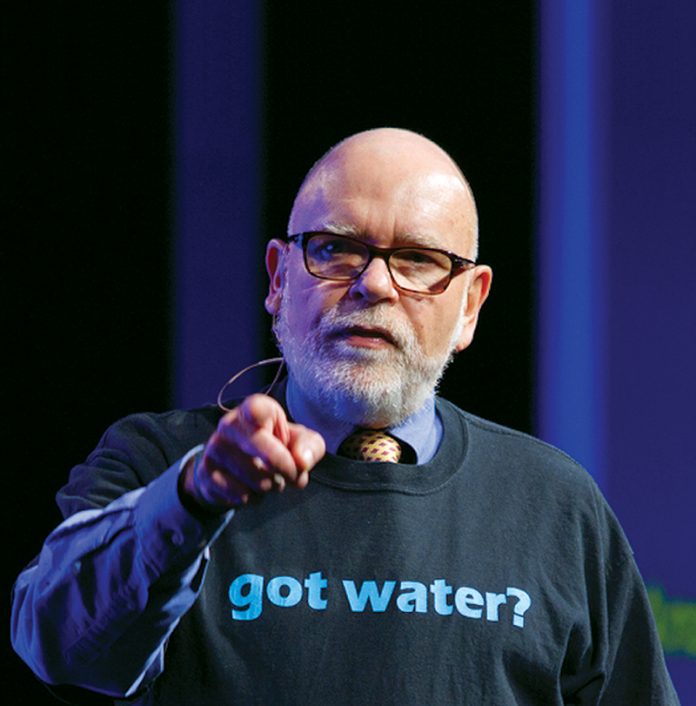By Michael Campana
When I was eight, wandering my suburban Long Island, New York neighbourhood, I noticed large areas surrounded by chain-link fences with culverts on one side. After a storm, they filled with runoff and provided great playgrounds. They were called sumps, but remained a mystery. No adult could adequately explain their purpose, except that they collected rainwater and bred mosquitoes.
Fifteen years later, as a University of Arizona hydrology graduate student, I discovered a bit more. In the 1930s my county built sumps to manage floodwaters, but soon realised they also recharged valuable aquifers, or groundwater basins.
Most of those sumps are now dry, replaced by a ‘modern’ storm sewer system, but my county was ahead of its time in terms of artificially managed–aquifer recharge (MAR). It even recognised one downside of its recharge operations: the poor quality when water ran off from the growing sprawl of streets, parking lots, and industrial sites.
Managed recharge is the increase in groundwater recharge over natural infiltration, as a result of interventions that enhance groundwater storage and quality. It can be passive or active. Aquifer Storage and Recovery (ASR), a type of MAR, is recovered from the same well used to inject it. Recently both seem to be experiencing something of a renaissance.
“Interest in MAR began over 70 years ago but with the onset of persistent droughts, momentum for MAR development in the USA is surging,” says Maria Gibson, doctoral student at Oregon State University.

Indeed, interest has grown throughout the world. An aquifer recharge inventory of the International Groundwater Resources Assessment Centre now lists almost 1,200 case studies from 50 countries on all the inhabited continents. In Mexico City, the latest International Symposium on MAR attracted participants from 17 countries on five continents, and seeks to increase global MAR as a key component of water management.
Compared with dam reservoirs, subsurface storage requires less land and dramatically reduces evaporation. But Gibson cites disadvantages, too. Chemically incompatible water can react with native groundwater and cause plugging, dissolution, or release previously immobile constituents.
“Water treatment requirements make MAR cost prohibitive for water planners,” she adds. “The public’s perception, driven by political agendas, have created legal barriers in some regions, and groundwater degradation and water quality concerns have prompted apprehension in others.”
“Managed aquifer recharge is best used in conjunction with, rather than as an alternative to, surface storage” says California hydrogeologist Timothy Parker.
Parker’s sound advice recalls a pilot project for managed recharge in northeast Oregon. Researchers diverted some of the mighty Columbia River to recharge local aquifers for use during the dry summers. The cooler groundwater could also lower streamflow temperatures to improve fish survival.

MAR comes in a variety of packages, explains Parker. These range from large scale capital-intensive engineering projects–“offstream infiltration ponds or big recharge and recovery wells”–to small scale, distributed “slow-it, spread-it, sink-it projects” involving rooftops, swales, rain gardens, or permeable pavements.
One long-running operation can be found just south of Los Angeles, California managed by the Orange County Water District, which was formed in 1933 in response to a five-year drought that brought fast declining groundwater levels and saltwater intrusion. “Today the OCWD recharges approximately 0.40 cubic kilometres per year with a variety of percolation ponds and injection wells supplied by advanced treated recycled water, storm flows and imported water,” says Parker. These “replenish the basin and maintain a hydraulic barrier along the coast to minimise further saltwater intrusion.”
On a larger scale, aquifer recharge could potentially mitigate the effects of vanishing snowpack and ice. Many mountain ranges–the Himalayas, Andes and Alps, among others–are losing their permanent glaciers. The lost storage can be offset by using recharge to store the meltwater for use at a later date. While unsustainable, this can provide a short term buffer until permanent supplies are found. Likewise, where winter precipitation increasingly lands as rain, rather than snow, managed recharge can store early runoff as groundwater, to be pumped out and used during the dry season.
Challenges remain and it’s far from a panacea. But we’ve come a long way from those mysterious Long Island sumps. The recharge revival offers a viable response to scarcity, drought, and climate change. So to increase resilience for tomorrow, put runoff back in the ground today.









